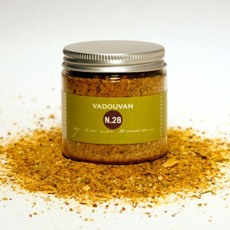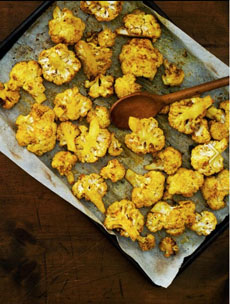TIP OF THE DAY: Vadouvan
 This simple blend, from IngredientFinder.com, contains only four ingredients: cumin, garlic, fenugreek and onion. |
We must admit, this was a new one for us. We received a recipe for deviled eggs for our consideration. One of the ingredients: vadouvan.
Vadou-what? We had to look it up. Vadouvan, also called French curry, is a French interpretation of an Indian masala that mixes cardamom, coriander, cumin, curry, curry leaves, fenugreek, garlic, marash chiles, mustard seeds and roasted onion, among other ingredients. Its flavor is more familiar to Western palates than many Indian spice mixtures. A key difference is in dried onions or shallots. The spice is thought to have originated due to French colonial influence in the Puducherry region of India. [Source: Wikipedia] Use it in place of curry powder on fish, lamb, chicken, pork, sauces, stews, soups and vegetables. It’s a delicious pairing with dairy, potatoes, starchy grains and anything grilled. Give a tin or jar as a holiday gift to your favorite cooks. There’s an attractive tin for $8.32 on Amazon, with free shipping on orders over $35. (Tins are preferable to jars, since light is one of the factors that reduces the potency of the spice, along with proximity to heat and moisture.) |
|



